The History of a Mouthful of Bread, Jean Macé [best autobiographies to read TXT] 📗
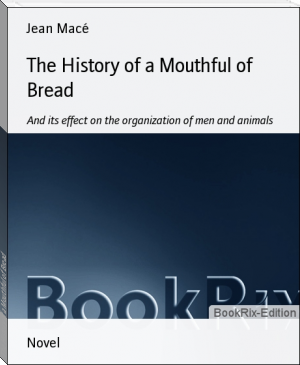
- Author: Jean Macé
Book online «The History of a Mouthful of Bread, Jean Macé [best autobiographies to read TXT] 📗». Author Jean Macé
collects from all directions and rushes into a large canal called the portal vein , which conveys it to the liver. As soon as this canal has entered the liver, it divides and subdivides itself in every direction, like the limbs and branches of a tree diverging from the trunk; and very soon the blood finds itself disseminating through an infinity of small canals or pipes, whose ultimate extremities, a thousand times finer than the finest hairs of your head, communicate with the tiny cells of the liver. There, each of the imperceptible little drops, thus carried into these imperceptibly minute cell-chambers, rids itself-but no one knows how-of a part of the sweepings it has carried along with it. Which done, the little drops thread their way back through other canals as fine as the first, and which go on uniting more and more to each other, like the branches of a tree on their way to the trunk-forming at last one large canal, through which the blood escapes from the liver, once more relieved from its weight of rubbish, and ready to recommence its work.
You are going to ask me, "What is all this to me-this history of the blood and its sweepings? It was the bile you undertook to tell me about, that liquid you spoke of as so necessary for the transformation of the food: we were to get out of the intestinal tubes by the help of the bile, you promised me."
Well, my little impatient minx, it is the history of the bile that I have been relating to you, and what is most remarkable about it is this. You have perhaps heard of those wholesale ragpickers, who makelarge fortunes by collecting out of the mud and dirt of the streets, the many valuable things which have been dropped there? Well, the liver is the master-ragpicker of the body. He fabricates, out of the refuse of the blood, that bile which is so valuable in the economy of the human frame. This bile is neither more nor less than the deposit left by the little drops of blood in the innumerable minute liver-cells. See what an ingenious arrangement, and in what a simple way two objects are effected by one operation!
Now you have learnt the genealogy of the bile, and the double office of the liver, which benefits the blood by what it takes from it, benefits the chyme by what it gives it, and is an economist at the same time-since it only gives back what it has received. This was what I particularly wished to explain to you: the rest you will easily learn.
The bile does not make a long stay in the little cells, it also escapes, by canals similar to those which carry off the blood, after itspurification; and which in a similar way unite by degrees together, until at length they terminate in a single canal, communicating with a little bag placed close against the liver, where the bile accumulates between the periods of digestion-so forming a stock on hand, ready to pour at once into the duodenum when the latter calls for its assistance. The next time the cook cleans out a fowl, ask her to show you the little greenish bladder which she calls the gall and which she takes such care not to burst, because it contains a bitter liquid which, if spilt upon it, would quite ruin the flavor of the fowl. Such, precisely, is the bag which holds the bile. Moreover, it is close by the liver of the fowl that you will find it placed: and you can convince yourself in a moment by it, that the little provision I tell you of is always stored away therein.
We have also within us a multitude of minute electric telegraphs, which transmit intelligence of all that occurs from one part of the body to another, in a more wonderful manner even than the telegraphs of man's making; later we shall see how they work. By their means the little bag by the liver is made aware in the twinkling of an eye of the entrance of the chyme into the duodenum, and forthwith the bile returns for some distance by the canal which brought it, and then branches off into a larger one which opens into the duodenum.
The liver, on getting this intelligence, sets to work more diligently than ever, and the bile flows in streams into the duodenum, where it mixes as it arrives with the current which comes from the pancreas. Thus combined, the two liquids flow over the chyme, which they saturate on all sides; and here, as I have said, the work of the intestinal canal ends. What is serviceable for the blood is separated from the useless refuse, and nothing remains but to get it out of the intestines. It is true that in their character of tubes these are closed on all sides. But do not trouble yourself: a means of escape is prepared.
Before we part, however, I must apologize for something. I have not described to you what the bile consists of, or what kind of refuse the blood leaves in the liver; nevertheless, as you take an interest in this much-neglected book of nature, you ought to know these things.
It is, however, very difficult to lead you by the hand through so many wonder*, where the secrets of nature are all in operation at once, and to explain each as soon as we meet with it. They combine, and progress together like the waves of the sea, where one breath suffices to agitate the whole mass.
When we have talked about the lungs, we will have another word to say about the liver.
LETTER XII. THE CHYLE.
To-day we have to begin by making acquaintance with a new term. I would willingly have spared you this, if I could, for the word is neither a pretty, nor a well-chosen one, but we cannot get on without it.
You are aware now that the learned, unknown sponsors, who gave names to the different parts of the body, bestowed the odd-enough one of
chyme on that pasty substance which passes out of the stomach when the cooking is over. We have said quite enough about it, and you know enough of it I am sure. Well! the people seem to have had quite a fancy for the word chyme , for they adopted it again, with only a very slight alteration, when they wanted to specify separately the quintessence of the chyme (the useful part that is), which has to unite with the blood, and which we have been speaking of as the gold of the aliments -this then they called chyle . I give you the name as I received it, but have no responsibility in the matter.
In concluding the last chapter I said we were sure to find there was a plan for extracting the best part of the chyme , viz. the chyle , from the intestinal canal; and a very simple one it is. A complete regiment of those little scavengers lately described, are drawn up in battle-array along the whole length of the small intestine, but especially round about the duodenum. There, a thousand minute pipes pierce in all directions through the coat of the intestine, and suck, like so many constantly open mouths, the drops of chyle as fast as they are formed. They are called chyliferous vessels or chyle-bearers, just as we might call hot-air stoves caloriferous or heat-bearers- from the Latin word fero, which means to carry or bear. I mentioned before that there were, within the intestine, certain elastic valves which obstruct the progress of the chyme, and oblige it to be constantly stopping. There are in fact so many of these, and the skin which lines the intestinal canal is so folded and plaited, that if it were stretched out at full length on a big table, it would cover at least as large a surface as that other skin, with which you are so well acquainted, which entirely clothes the body outside.
Now, the chyliferous vessels we have been speaking of insinuate themselves into all the plaits and folds alluded to, and thus they reach at last the very centre of the chymous paste, and not a single drop of chyle can escape them. They do their work so well, that the separation is effected long before the paste reaches the large intestine; and when that has forced its way through the door which guards the entrance, and which prevents its ever returning again, the
chyle is already far off on its mission. It has threaded its way along the little pipes, and, always creeping nearer and nearer, is on the high-road to the heart, where it is anxiously expected.
And what becomes of the rest? There is nothing further to be said about it, but that it shares the fate of everything else which, having answered its purpose in its place, is no longer wanted and must be got rid of. Thus in works where iron-stone smelting is carried on, the refuse that remains after the ore is extracted, though available for road-making or other purposes, is thrown out of the manufactory as a useless incumbrance there.
Our history requires us to follow the fate of that golden aliment the
chyle, which is now in a condition to support the life of the body, and every drop of which will turn into blood-the blood which beats at our hearts, nourishes our limbs, and sets at work the fibres of our brain.
I ought to tell you first that the chyle, when it leaves the intestine, is very like milk. It is a white, rather fatty juice, having the appearance, when you look closely at it, of a kind of whey, in which a crowd of globules, or little balls if you prefer it, infinitesimally small, are swimming about. Some people, whose curiosity nothing can check, have put the tips of their tongue to it; so I am able to tell you, if you care for the information, that it has rather a saltish taste.
At this point it is what may be called new-born blood, and to carry on the metaphor, blood whose education has yet to be completed. All the elements of blood are there already, but in confusion and intermingled, so that they cannot yet be recognised. A wonderful fact, and one of which I have no explanation to offer you, because among the many mysteries which are silently going on within us is this, that the education of the new-born blood begins entirely of itself in the vessels which are carrying it along. During their very journey, the confused elements are setting themselves in order and forming into groups. In short the chyle, when it comes out of the chyliferous vessels, is already much more like blood than when it entered them, and yet one cannot account for the change. It is changed, however; its whiteness has already assumed a rosy tinge, and if it is exposed to the air it may be seen turning slightly red, as if to give notice to the observer of what it is about to become.
You know that all our scavengers uniting together deposit their sweepings in one large canal, which is called the thoracic duct. The chyle scavengers arrive there just like the rest, and there our poor friend finds himself confounded for a
You are going to ask me, "What is all this to me-this history of the blood and its sweepings? It was the bile you undertook to tell me about, that liquid you spoke of as so necessary for the transformation of the food: we were to get out of the intestinal tubes by the help of the bile, you promised me."
Well, my little impatient minx, it is the history of the bile that I have been relating to you, and what is most remarkable about it is this. You have perhaps heard of those wholesale ragpickers, who makelarge fortunes by collecting out of the mud and dirt of the streets, the many valuable things which have been dropped there? Well, the liver is the master-ragpicker of the body. He fabricates, out of the refuse of the blood, that bile which is so valuable in the economy of the human frame. This bile is neither more nor less than the deposit left by the little drops of blood in the innumerable minute liver-cells. See what an ingenious arrangement, and in what a simple way two objects are effected by one operation!
Now you have learnt the genealogy of the bile, and the double office of the liver, which benefits the blood by what it takes from it, benefits the chyme by what it gives it, and is an economist at the same time-since it only gives back what it has received. This was what I particularly wished to explain to you: the rest you will easily learn.
The bile does not make a long stay in the little cells, it also escapes, by canals similar to those which carry off the blood, after itspurification; and which in a similar way unite by degrees together, until at length they terminate in a single canal, communicating with a little bag placed close against the liver, where the bile accumulates between the periods of digestion-so forming a stock on hand, ready to pour at once into the duodenum when the latter calls for its assistance. The next time the cook cleans out a fowl, ask her to show you the little greenish bladder which she calls the gall and which she takes such care not to burst, because it contains a bitter liquid which, if spilt upon it, would quite ruin the flavor of the fowl. Such, precisely, is the bag which holds the bile. Moreover, it is close by the liver of the fowl that you will find it placed: and you can convince yourself in a moment by it, that the little provision I tell you of is always stored away therein.
We have also within us a multitude of minute electric telegraphs, which transmit intelligence of all that occurs from one part of the body to another, in a more wonderful manner even than the telegraphs of man's making; later we shall see how they work. By their means the little bag by the liver is made aware in the twinkling of an eye of the entrance of the chyme into the duodenum, and forthwith the bile returns for some distance by the canal which brought it, and then branches off into a larger one which opens into the duodenum.
The liver, on getting this intelligence, sets to work more diligently than ever, and the bile flows in streams into the duodenum, where it mixes as it arrives with the current which comes from the pancreas. Thus combined, the two liquids flow over the chyme, which they saturate on all sides; and here, as I have said, the work of the intestinal canal ends. What is serviceable for the blood is separated from the useless refuse, and nothing remains but to get it out of the intestines. It is true that in their character of tubes these are closed on all sides. But do not trouble yourself: a means of escape is prepared.
Before we part, however, I must apologize for something. I have not described to you what the bile consists of, or what kind of refuse the blood leaves in the liver; nevertheless, as you take an interest in this much-neglected book of nature, you ought to know these things.
It is, however, very difficult to lead you by the hand through so many wonder*, where the secrets of nature are all in operation at once, and to explain each as soon as we meet with it. They combine, and progress together like the waves of the sea, where one breath suffices to agitate the whole mass.
When we have talked about the lungs, we will have another word to say about the liver.
LETTER XII. THE CHYLE.
To-day we have to begin by making acquaintance with a new term. I would willingly have spared you this, if I could, for the word is neither a pretty, nor a well-chosen one, but we cannot get on without it.
You are aware now that the learned, unknown sponsors, who gave names to the different parts of the body, bestowed the odd-enough one of
chyme on that pasty substance which passes out of the stomach when the cooking is over. We have said quite enough about it, and you know enough of it I am sure. Well! the people seem to have had quite a fancy for the word chyme , for they adopted it again, with only a very slight alteration, when they wanted to specify separately the quintessence of the chyme (the useful part that is), which has to unite with the blood, and which we have been speaking of as the gold of the aliments -this then they called chyle . I give you the name as I received it, but have no responsibility in the matter.
In concluding the last chapter I said we were sure to find there was a plan for extracting the best part of the chyme , viz. the chyle , from the intestinal canal; and a very simple one it is. A complete regiment of those little scavengers lately described, are drawn up in battle-array along the whole length of the small intestine, but especially round about the duodenum. There, a thousand minute pipes pierce in all directions through the coat of the intestine, and suck, like so many constantly open mouths, the drops of chyle as fast as they are formed. They are called chyliferous vessels or chyle-bearers, just as we might call hot-air stoves caloriferous or heat-bearers- from the Latin word fero, which means to carry or bear. I mentioned before that there were, within the intestine, certain elastic valves which obstruct the progress of the chyme, and oblige it to be constantly stopping. There are in fact so many of these, and the skin which lines the intestinal canal is so folded and plaited, that if it were stretched out at full length on a big table, it would cover at least as large a surface as that other skin, with which you are so well acquainted, which entirely clothes the body outside.
Now, the chyliferous vessels we have been speaking of insinuate themselves into all the plaits and folds alluded to, and thus they reach at last the very centre of the chymous paste, and not a single drop of chyle can escape them. They do their work so well, that the separation is effected long before the paste reaches the large intestine; and when that has forced its way through the door which guards the entrance, and which prevents its ever returning again, the
chyle is already far off on its mission. It has threaded its way along the little pipes, and, always creeping nearer and nearer, is on the high-road to the heart, where it is anxiously expected.
And what becomes of the rest? There is nothing further to be said about it, but that it shares the fate of everything else which, having answered its purpose in its place, is no longer wanted and must be got rid of. Thus in works where iron-stone smelting is carried on, the refuse that remains after the ore is extracted, though available for road-making or other purposes, is thrown out of the manufactory as a useless incumbrance there.
Our history requires us to follow the fate of that golden aliment the
chyle, which is now in a condition to support the life of the body, and every drop of which will turn into blood-the blood which beats at our hearts, nourishes our limbs, and sets at work the fibres of our brain.
I ought to tell you first that the chyle, when it leaves the intestine, is very like milk. It is a white, rather fatty juice, having the appearance, when you look closely at it, of a kind of whey, in which a crowd of globules, or little balls if you prefer it, infinitesimally small, are swimming about. Some people, whose curiosity nothing can check, have put the tips of their tongue to it; so I am able to tell you, if you care for the information, that it has rather a saltish taste.
At this point it is what may be called new-born blood, and to carry on the metaphor, blood whose education has yet to be completed. All the elements of blood are there already, but in confusion and intermingled, so that they cannot yet be recognised. A wonderful fact, and one of which I have no explanation to offer you, because among the many mysteries which are silently going on within us is this, that the education of the new-born blood begins entirely of itself in the vessels which are carrying it along. During their very journey, the confused elements are setting themselves in order and forming into groups. In short the chyle, when it comes out of the chyliferous vessels, is already much more like blood than when it entered them, and yet one cannot account for the change. It is changed, however; its whiteness has already assumed a rosy tinge, and if it is exposed to the air it may be seen turning slightly red, as if to give notice to the observer of what it is about to become.
You know that all our scavengers uniting together deposit their sweepings in one large canal, which is called the thoracic duct. The chyle scavengers arrive there just like the rest, and there our poor friend finds himself confounded for a
Free e-book «The History of a Mouthful of Bread, Jean Macé [best autobiographies to read TXT] 📗» - read online now
Similar e-books:
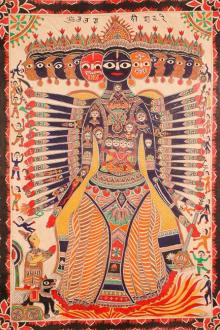
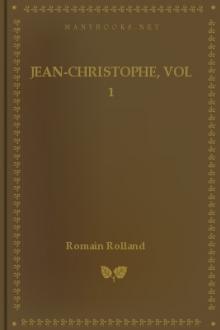
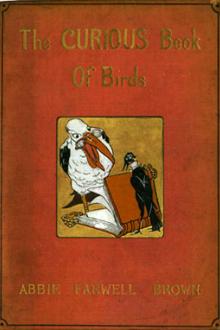

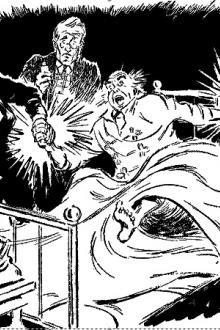
Comments (0)